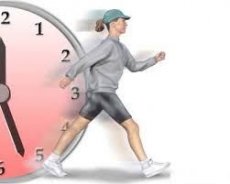Medical expert of the article
New publications
Proper diet and physical activity can help reduce the risk of stroke
Last reviewed: 02.07.2025

All iLive content is medically reviewed or fact checked to ensure as much factual accuracy as possible.
We have strict sourcing guidelines and only link to reputable media sites, academic research institutions and, whenever possible, medically peer reviewed studies. Note that the numbers in parentheses ([1], [2], etc.) are clickable links to these studies.
If you feel that any of our content is inaccurate, out-of-date, or otherwise questionable, please select it and press Ctrl + Enter.

At the Karolinska University, a survey was conducted of more than 30 thousand women, whose age was around 60 years. Each of the participants had to fill out a questionnaire, which had 350 questions about a healthy lifestyle and nutrition. After filling out the questionnaires, specialists conducted long-term observation (10 years) of each of the survey participants.
Experts gave women five pieces of advice on a healthy lifestyle: moderate alcohol consumption, quitting smoking, proper nutrition, physical activity and normal weight.
Experts urged women to eat more vegetables and fruits, as well as low-fat dairy products, walk or cycle more (at least 40 minutes daily) and do gymnastics (about an hour a week).
Most women followed 2-3 recommendations of specialists, about 600 women followed every single recommendation, and about one and a half thousand completely refused all recommendations. As a result, scientists recorded the development of stroke in 1554 women.
During the study, scientists determined that among those who followed all the advice and led a healthy lifestyle, the likelihood of developing a stroke was 54% lower, compared to those who did not follow any prescriptions. In the group of women who paid special attention to proper nutrition, cerebrovascular accidents occurred 13% less often, compared to those who did not follow a diet.
Another long-term study found that women need to eat more bananas after their periods stop.
Over the course of more than 10 years, specialists studied more than 90 thousand women. The specialists were interested in the amount of potassium consumed and the development of stroke or death.
At the start of the experiment, the women had no history of stroke, and the average amount of potassium consumed per day was 2.6 mg.
The daily dose of potassium should not be less than 3.5 mg (according to WHO recommendations), but only 16% of study participants consumed the required amount of this micronutrient.
Women who got a lot of potassium from their diets were 12% less likely to have a stroke than those who consumed low amounts of the mineral.
Among women with normal blood pressure who consumed the required amount of potassium, ischemic stroke was 27% less likely to occur.
Women who consumed a lot of potassium and had high blood pressure had the lowest mortality rates, but the amount of potassium consumed did not affect the development of stroke.
In conclusion, the experts noted that consuming sufficient amounts of potassium is useful only until hypertension begins to develop. At the same time, women who received the required dose of potassium had a 10% lower risk of premature death.
In addition to bananas, potassium is found in potatoes, sweet potatoes, and white beans, but excessive consumption of potassium is not safe for the heart.


 [
[